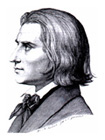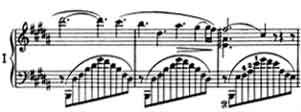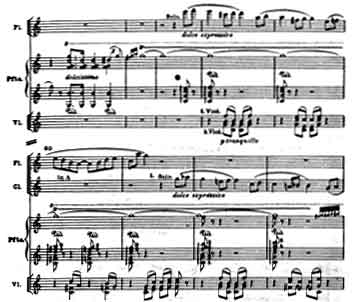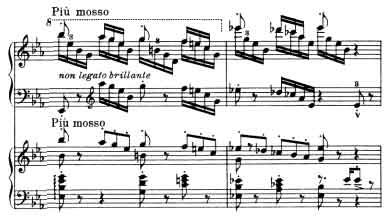 Liszt
analyzed part of this movement in a letter to his cousin Eduard Liszt dated
March 26, 1857. 1
Liszt
analyzed part of this movement in a letter to his cousin Eduard Liszt dated
March 26, 1857. 1
"The fourth movement of the concerto, from the Allegro marziale,
corresponds to the second movement, Adagio; it is merely a condensed
recapitulation of what was heard earlier, involving fresh and livelier rhythms,
but containing no new motif, as will immediately become clear to you
when you peruse the orchestral score. This way of drawing together
a piece and rounding it off at the end is something virtually unique to me,
although it can be thoroughly defended and justified from the standpoint of
musical form.
The trombones and basses take up the second part of the motif from the Adagio
(B major):  .
.
The piano figuration which follows 
is none other than a repeat of the motif first heard in the
Adagio on flute and clarinet  ,
,
just as the final section is a major-key variant and intensification
of the motif from the Scherzo  ,
,
until finally the first motif ![]() enters on the pedal of the dominant B-flat accompanied by trilled figurations
and brings the whole piece to an end. - "
enters on the pedal of the dominant B-flat accompanied by trilled figurations
and brings the whole piece to an end. - "
1 Briefe hervorragender Zeitgenossen an Franz Liszt: Vol. II: 1855 - 1881 (1895), 273ff; quoted in Ernst Burger, Franz Liszt: A Chronicle of His Life in Pictures and Documents, trans. Stewart Spencer with a foreword by Alfred Brendel (Princeton: Princeton University Press, 1989), 198.